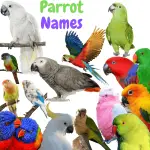
Blue parrot bird: The species of the beautiful blue macaw from the cartoon “Rio” is declared extinct from the wild
The animated film Rio, which follows an adventurous blue macaw named Blu throughout his journey back into the wild, centers on efforts to prevent the extinction of this macaw outside of domestication.
The film was released in 2011, less than a decade ago, but unfortunately, the dark future announced in this film has already come true…
The blue parrot bird macaw that inspired Rio is officially extinct in all the wild https://t.co/jzu5MlqcLM pic.twitter.com/y7aj4V1qmx
— CBS News (@CBSNews)
According to a study conducted by the NGO BirdLife International in 2018, the Spix’s macaw has been officially declared extinct in the wild. Some birds still survive in captive breeding programs, but that doesn’t change the painful reality: they’ve been officially eradicated in their original habitat, like a handful of other species each year.
The Spix’s macaw is a pale-eye-catching pale blue parrot native to Brazil.
The Blue parrot bird species was already rare even before human intervention. It was first officially recorded by German naturalist Johann Baptist von Spix in the early 1800s, but scientists have long believed it had disappeared several times, long before it actually happened, due to significant delays between its human observation.
Modern methods of scientific study, however, have shown when the bird was really endangered. After records of the studied bird in the 1970s and 1980s, macaw populations experienced an even more dangerous decline due to trade, trapping, and habitat destruction near Rio de Janeiro, Brazil.
Starting in 2000, the species officially went 16 years without being officially spotted in the wild — and after spotting a single male in 2016, it was officially declared extinct only two years later.
The extinction of the species was probably deemed inevitable long before Rio arrived on the screens, unfortunately. According to an article published by Birdlife in 2018, the last known female Spix’s macaw – which was depicted as a wild female named Jewel in the film – likely perished around the year 2000. Only male Spix’s macaws remained in the wild, and the species will have no way to survive once they die.
The adorable bluebird was the first bird species confirmed to be extinct in the last decade, but it won’t be the last. Rapid rates of deforestation in the Amazon region had already exacerbated the problem, with many species on the list of critically endangered species in recent years.
This is a reversal of previous extinctions – which Birdlife Chief Scientist Stuart Butchart says had typically occurred among island species – in fact, there are far more victims of the effects of human activities than the turtles and whales so often seen in species conservation messages.
It’s heartbreaking to think that there has never been a Blu in real life able to escape and find his Jewel, his treasure. But hopefully, movies like Rio can help change the fate of other species in the future. As the entertainment industry makes it easier for young children to educate about saving the planet, there is hope that future generations will become more involved in protecting the species belonging to characters like Blu and The Wonders of the Planet.
Blue parrot back home after 20 years of extinction, with a Belgian boost
Poached to extinction for its beauty – superb blue-green plumage – and the mystery surrounding it – even after its first description in the nineteenth century, it was rarely observed – the Spix’s macaw could experience a new life. On June 11, eight of these parrots, extinct in the wild for twenty years, were reintroduced into the wild. This project is exceptional.
The natural habitat of the Spix’s macaw is the caatinga, a tropical dry forest in northeastern Brazil that covers 10% of the country. It is an NGO, the Association for the Conservation of Endangered Parrots (ACTP), which is at the origin of this reintroduction. She collected the last living specimens still in captivity in Berlin, where she established a breeding program.
With Pairi Daiza
And this, with the help, among others, of the Pairi Daiza Foundation: in 2018, the Brugelette animal park was entrusted with young Spix’s macaws as part of this project. In March 2020, three “Belgian” macaws were sent to Curaçá in Brazil with 49 others from Berlin. Since then, part of it has resided in a barn, where babies are hoped to be born. Others stay in huge rehabilitation aviaries. They live there in the company of Illiger’s macaws, captured in the wild, who must teach them basic survival gestures.
It is with about fifteen Illiger that the eight Spixes were “released” on June 11, in soft release mode. The door of an aviary was simply opened and will remain so for a long time. Six macaws came out in 30 minutes but two preferred to stay.
Twelve more macaws are expected to be released by the end of the year and more in the coming years. For its part, Pairi Daiza, which has built a special center, received fourteen additional Spix’s macaws for breeding at the end of 2020. The goal is that those born in Pairi Daiza can also be released one day in Brazil.




















